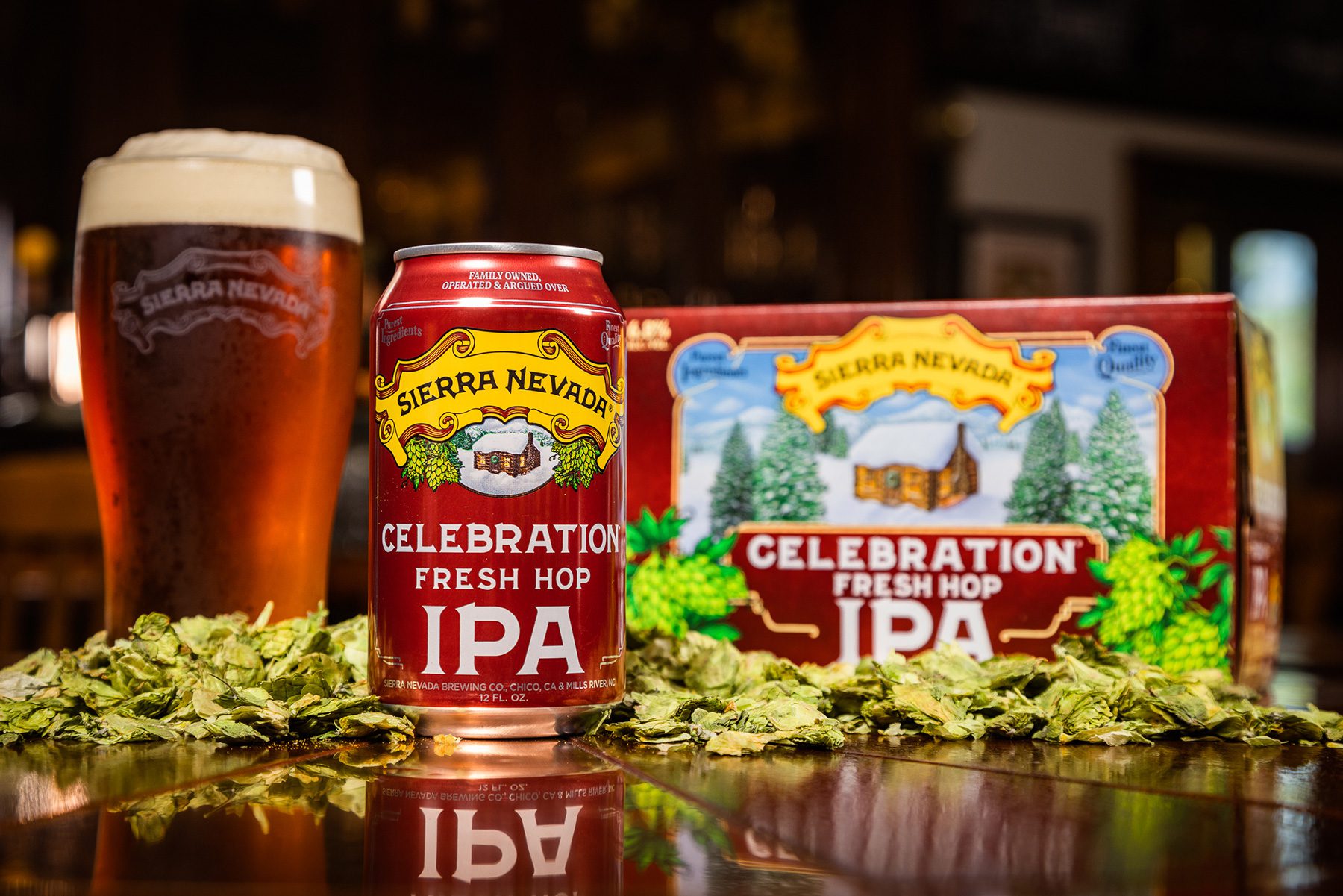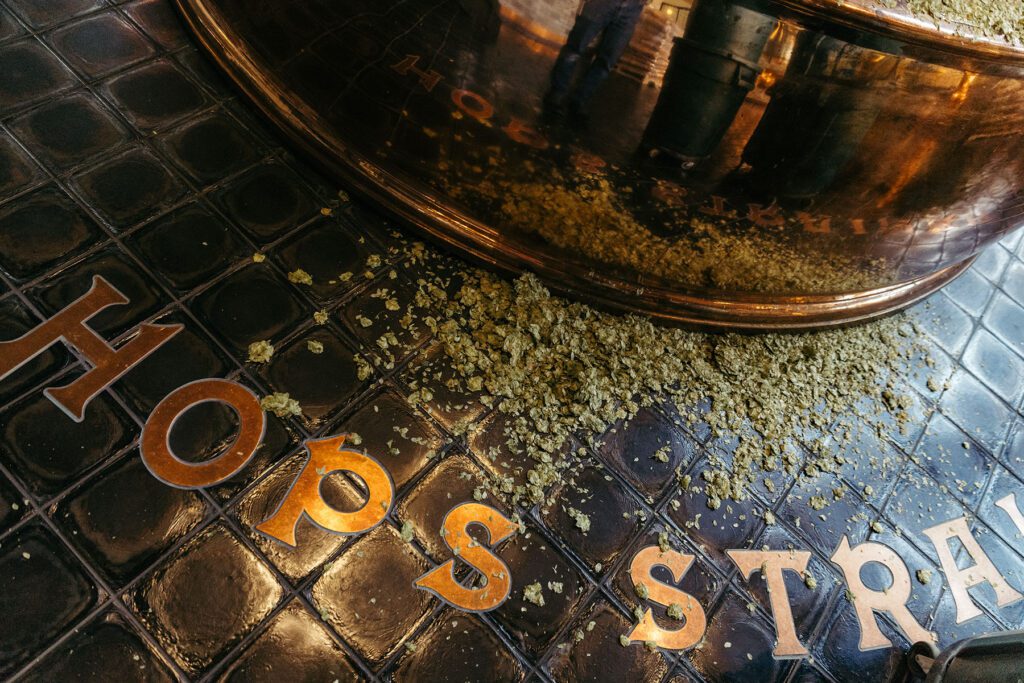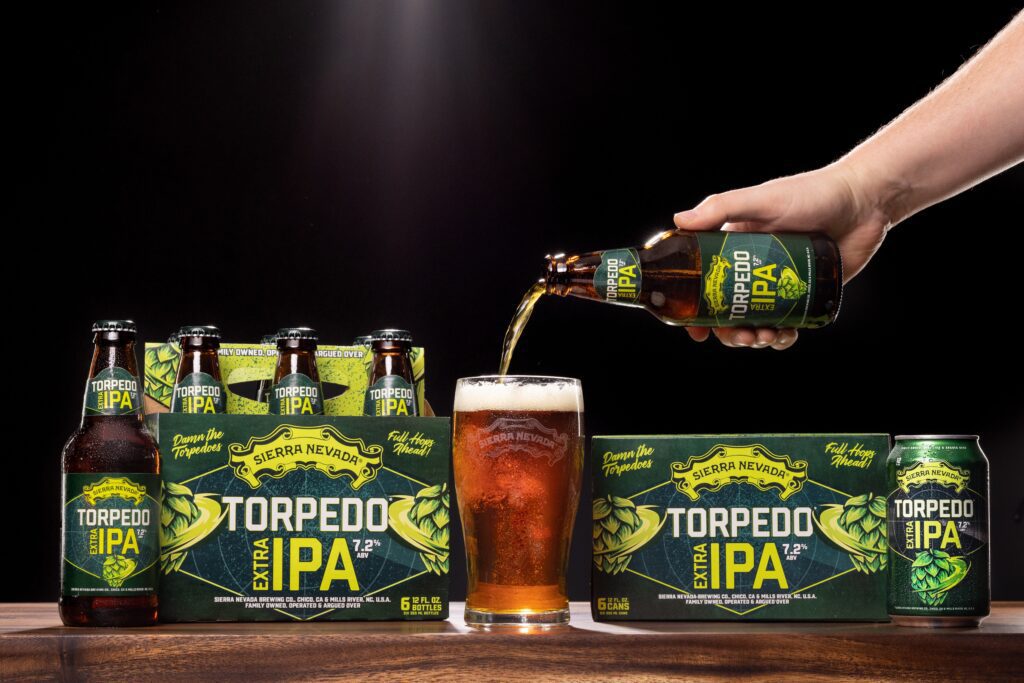What is the difference between IPA and Pale Ale?
When it comes to American craft beer, the broad styles of Pale Ale and IPA sit atop the throne. They put hops in the spotlight, right where drinkers want them.
But that wasn’t always the case, not even 40 years ago when Ken Grossman started Sierra Nevada. Making his flagship beer a Pale Ale was risky; beer drinkers at large didn’t have a taste for bold hops. But Ken wanted to define a style, and Pale Ale went on to set the American standard.
And our love of hops only grew — same for the drinkers — paving the way for IPAs with even more audacious flavor. These days a Big Little Thing is no big deal, and hopheads gladly brace their taste buds for Atomic Torpedo. But hit rewind and this flavor wave of Pale Ale and IPA originates centuries ago, across the pond with British brewers.


What is a Pale Ale?
Sierra Nevada Pale Ale “is rather more alcoholic, bitter and hoppy than English Pale Ales,” says Charlie Bamforth, our Senior Quality Advisor who hails from England — the source of it all.
Pale Ale Substyles
English-Style Pale Ale first emerged in the 1700s alongside advances in kilning, or the heating and drying of malt to achieve desired colors and flavors in beer. Expect alcohol by volume (ABV) to land between 4.5%–5.5%, with a more delicate balance of malt character — sweet, bready — and hop flavor, which has the hallmark earthy and herbal notes of English hop varieties.
American Pale Ale, meanwhile, can jump into the 6% ABV realm, and hops take center stage — typically American-grown, “new world” varieties — although malt maintains a presence. Sierra Nevada Pale Ale, for example, uses Cascade hops for a punchy pine and citrus aroma, while its malt foundation contributes notes of caramel.

What is an IPA beer?
IPA generally ups the hop character — aroma, flavor, and often bitterness — with a larger ABV range of 5.5%–7.5%. In the century after Pale Ale took root, British brewers who exported beer learned that extra hopping could help maintain flavor and freshness on long ocean journeys. (Hops are natural preservatives!) What emerged was a Pale Ale made for the East, eventually adopting the IPA, which stands for India Pale Ale, moniker.
Our Celebration IPA, introduced in 1981, was among the first American-style IPAs to gain favor. Whereas our Pale Ale is 5.6% ABV and 38 IBU (bitterness units), Celebration boasts a 6.8% ABV and 65 IBU.

It’s worth noting the vast world of IPA substyles, from Hazy IPA, Session IPA, and Cold IPA to bruisers like Hoptimum, our Triple IPA at 11% ABV and 75 IBU. If hoppy is your flavor, the options are truly endless.
Pale Ale vs IPA taste
Pale Ale and IPA share some common traits, but their tastes don’t fit neatly in a box. As craft brewers continue to explore new ingredients and brewing processes, the flavor nuances only seem to grow.
What does Pale Ale taste like?
When you sip an American Pale Ale beer, you’ll likely encounter hops that are fruity, floral, or resinous (think sappy pine). Toasty malt imparts a hint of sweetness while also defining the beer’s color, which ranges from pale golden to light amber. The medium body makes for a certain richness, yet it should finish smooth.
What does an India Pale Ale taste like?
IPA offers bold flavors that can be citrusy, tropical, piney, or even floral. A sturdy malt backbone balances the bitterness, with just enough sweetness to round out the edges. Above all, IPAs deliver an unmistakable punch of hop aroma and flavor that sets them apart.

Pale Ale Taste vs IPA: Which is Better?
Who wins the taste test of American Pale Ale vs. IPA? A lot of it comes down to personal preference. If you’re craving a super drinkable brew with a medium body and smooth finish, you’ll likely want to reach for a Pale Ale. The hoppy, resinous, and sometimes fruity profile is ideal on a summer day. The toasty malt brings a hint of sweetness without becoming cloying.
On the other hand, if you prefer an even bolder beverage, IPA is your winner. The difference between Pale Ale and IPA is largely about hop flavor, which is more assertive in IPA. You might also see the ABV jump, and the hop bitterness (IBU) can rise too. Yet substyles like Hazy IPA, with their distinctly tropical vibes, make IPA an approachable entry into craft beer.
Is a Pale Ale an IPA?
While you can trace the IPA back to Pale Ales, they are not one and the same. Both styles place emphasis on hops, but the IPA levels it up across the board: bigger hop aroma and flavor, stronger ABV, and higher IBU. (But don’t take bitterness at face value; it’s more than the number.)
Examples of IPAs
Craft brewers entered 365 Juicy/Hazy IPAs for judging in the 2023 Great American Beer Festival. (That’s separate from the American-style IPA category: another 206!) So you might start here, but a delicious rabbit hole awaits.
American IPA
Sierra Nevada Celebration IPA
Allagash Hop Reach IPA
English-style IPA
Harpoon IPA
Brooklyn Brewery East IPA
Hazy IPA
Sierra Nevada Hazy Little Thing
Firestone Walker Mind Haze IPA
Double IPA
Sierra Nevada Torpedo IPA
Russian River Pliny the Elder
Examples of Pale Ales
American Pale Ale
Sierra Nevada Pale Ale
Deschutes Mirror Pond
English-style Pale Ale
Odell 5 Barrel
Creature Comforts Vujà Dé: Landlord
IPA vs Pale Ale: Which one to choose?
No surprise that choosing an IPA vs. a Pale Ale is all about what tastes you’re after. If you’re looking for more of a middle ground, where hops and malt truly co-star, then scan the bar menu or store shelves for a Pale Ale. But if you want a direct hit of hops, where every key stat is cranked higher, craft brewers make IPA for days.





